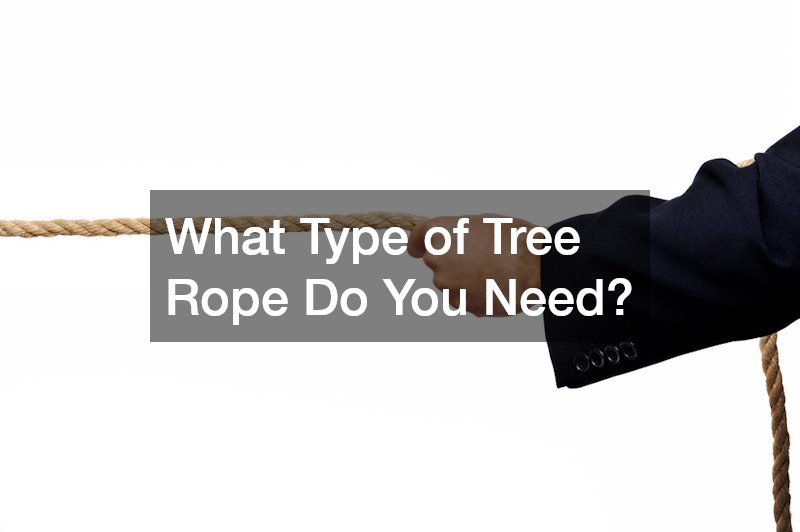When it comes to tree work, selecting the right type of rope is crucial for ensuring safety, efficiency, and success in various tasks such as climbing, rigging, and lowering branches. Different tree ropes are designed for specific functions, and using the wrong type can lead to accidents or equipment failure. Here’s a guide to help you choose the right type of tree rope for your needs.
Climbing Ropes
Climbing ropes are designed for arborists who need to ascend and descend trees safely.
These ropes are usually made from high-strength, low-stretch materials like polyester or a blend of polyester and nylon. The most common types of climbing ropes are either double-braid or kernmantle construction. Double-braid ropes have a braided core and a braided sheath, providing strength and flexibility, while kernmantle ropes feature a strong core protected by a woven outer sheath, offering durability and abrasion resistance. When choosing a climbing rope, consider the diameter and weight. A standard diameter for climbing ropes is between 11mm and 13mm, providing a good balance of strength, weight, and ease of handling.
Rigging Ropes
Rigging ropes are used for lowering and controlling heavy branches or entire sections of a tree. These ropes need to withstand significant loads and dynamic forces without stretching excessively. Rigging ropes are generally thicker and stronger than climbing ropes, with diameters ranging from 12mm to 19mm or more. They are made from materials like polyester or a polyester-polypropylene blend, which offers high strength, durability, and resistance to abrasion. Low-stretch rigging ropes are ideal for precise control, while ropes with a bit more elasticity are better suited for absorbing shock loads when lowering heavy branches.
Bull Ropes
Bull ropes, also known as bull lines, are heavy-duty ropes used for the toughest tree jobs, such as pulling over large trees or controlling massive loads. These ropes are typically the thickest and strongest, often exceeding 19mm in diameter. They are constructed from high-strength materials like polyester or nylon, which provide the necessary durability and resistance to abrasion. Bull ropes are essential for jobs that require maximum strength and reliability, ensuring that even the heaviest loads can be controlled safely.
Throw Lines
Throw lines are thin, lightweight ropes used to position climbing ropes or rigging lines in trees. These lines are typically made from high-strength, low-stretch materials like Dyneema or Spectra, which are both lightweight and incredibly strong. Throw lines are often used with a throw weight to accurately place the line over a branch, allowing the climber or rigger to set their ropes in the desired position. These ropes usually have a diameter of around 1.5mm to 3mm, making them easy to throw and manipulate.
Safety Considerations
When selecting any tree rope, safety should be the top priority. Always choose ropes that meet industry standards for strength and durability, and ensure they are rated for the specific tasks you will be performing. Regularly inspect your ropes for signs of wear, such as fraying, cuts, or UV damage, and replace them as necessary to maintain safety.
.

